
IMPORTANCE OF PLAY
We have dedicated our first edition of Bolder to play and how we continue to embrace a playful approach to learning.
MAYLANDS CAMPUS
Towards our 2021 Vision, the evolution and trajectory of our new Maylands Campus for our senior students. WHY OUR WILDSPACE IS SO ESSENTIAL

FIND INSIDE OUR PULL OUT 2020–2023 STRATEGIC PLAN — FEATURING OUR PURPOSE, VISION AND STRATEGIC PRIORITIES. BE
BOLDPARK.COM ISSUE /01
BOLD BE BRAVE BELONG
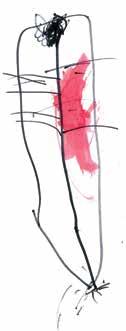

Ngulluk
Hello

EMAIL:
WEBSITE:

/ 02 BEING BOLDER Paul Whitehead / 06 WHY PLAY? Sarah Polson-Brown / 13 2020 – 2023 STRATEGIC PLAN Pull out and keep! / 03 PEDAGOGY OF PLAY Nicole Hunter / 08 THE DOOR OF PERCEPTION Renata Biancardi / 18 MAPPING A SENSE OF PLACE Rhys George Brooke Healy Jasmine Mawdsley / 24 MAYLANDS EMERGING Paul Whitehead / 04 PLAY: ARE YOU BOLD ENOUGH? Kiah Hamersley-Rule / 10 BOLDPARKIA Rhys George Renee Yonge Sam Jefferies / 12 GOING WILD Nicole Hunter / 20 OUTTA BOUNDZ / 28 FINAL WORDS Paul Whitehead Nicole Hunter
61-63 Powis Street, Wembley WA 6014 MAYLANDS: 76 Seventh Avenue, Maylands WA 6051 PHONE: 9387 5050
9387 5051
WEMBLEY:
FAX:
office@boldpark.com
www.boldpark.com EDITORS: Paul Whitehead and Nicole Hunter DESIGN: Angela Mitchell — angelamitchell.com.au PHOTOGRAPHY: Rory Henderson and BPCS Staff PRINTING: The Big Picture Factory Kaya Wandjoo!
nidja Nyungar Boodjar
Dijnanginy boh djinoong Galup kepi mia.
Welcome! We are looking at Nyungar land. Look over there It’s Lake Monger, and the place of water on the Nyungar Boodjar. CONTENTS This Acknowledgement of Country was written for us by our Elder, Mr Neville Collard. cover spine illustration: Shanai N illustration feather left: Henry D illustration feather right: Eamon S This magazine has been printed using solar power and low environmental impact FSC certified pulps in a facility that is ISO 14001 Environmental Management System accredited. Enquiries related to editorial inclusions, advertising and subscription can be made to ‘Bolder Magazine’, Bold Park Community School, PO Box 2085 CHURCHLANDS WA 6018, Australia. DISCLAIMER: Although the editors have taken reasonable precautions to consider the contents of this publication and the embedded links to internet resources; the views expressed are ultimately the opinions and voice of the authors and may not necessarily reflect the views of Bold Park Community School.
BEING BOLDER
Our key purpose as a learning community is to “Reimagine what a school can be by cultivating a community of learners who positively influence their worlds.”

Wow! It is statement that motivates us to keep stretching forward, stay embedded in best practice and research, to be a school who lead the way in what is possible. I am energised by how our teams continue to ‘keep the light alive in children’s eyes’ at Bold Park Community School.
Over the past years we have had many discussions about how to make this magic ‘visible’ and how to clearly articulate the way our philosophical priorities translate into practice ‘on the ground’, in the day to day learning experiences of our children and young people. These insights are sought by prospective families, existing families (wishing to peek into the next phases of their child’s Bold Park experience), and the wider educational community who are inspired by the opportunities and priorities we are able to offer and experience with our children.
Why ‘Bolder’?
The magazine you hold in your hands, ‘Bolder’ is a new initiative to help make tangibly visible the value of a Bold Park education. Each edition will seek to foreground a philosophical or pedagogical priority, with this edition focusing on the value of PLAY. Inside you will find stories, reflections and projects from across the school that articulate this central, core theme.
We loved some of the creative names that came from our community for the magazine: ‘Bolderdash’, ‘Bold Faced’, ‘Bold Being’, ‘Caught and Bold’ and even … ‘The Bold and the Beautiful’! But ‘Bolder’ seemed to serve many masters, Being BOLDER and encouraging those who read it to be BOLDER too, an obvious salute to our school’s name and our ‘BOLD’ energy in ‘challenging the status quo of education by rethinking and reimagining what a school can be!’ We enjoyed that the title audibly connects with ‘boulder’ i.e. prioritising the big rocks (boulders) and a hint of a connection with nature and outdoors.
Most importantly, we hope that ‘Bolder’ will be an empowering sharing tool for our families to feel they can articulate more tangibly the value of the choice they have made in Bold Park, and for educators to feel inspired by what is possible.
In celebrating the release of our inaugural issue, I especially thank Co-Editor, Nicole Hunter, our Graphic Designer (and Bold Park parent), Angela Mitchell and all of our contributors for their work and commitment to a ‘Bolder’ vision.
Enjoy! We look forward to your feedback.
Kindly
Paul Whitehead Principal
PEDAGOGY OF PLAY
In a complex world where innovation, creativity, adaptability and collaboration are more important than ever, playful learning is powerful pedagogy.


Play is deeply reflective of our humanity and a predominant learning strategy for young children. Ideation, mastery, perseverance, risk taking, challenge, collaboration, imagination, problem solving, innovation: all witnessed in young children’s deep play and all valued allies of learning (Bjorklund, 2007). However, while most people are comfortable with the notion of young children learning through play, for some reason the thought that play can continue be a useful pedagogic tool with older children or adults is less common. Perhaps the challenge is in picturing how we can harness something as free-wheeling and individualised as play, to reach prescribed learning outcomes of the schooling curriculum.
What do we mean by ‘play’?
For such a simple word ‘play’ is indeed a complex subject, encompassing a multitude of activity and human experience. Observing children at play we can attempt to categorise it into ‘types’ or forms of play based on the observable features such as: make believe, locomotor, risk taking, rules based etc. Although in truth, most playful activity involves a mixture of these. It is also equally true that what maybe playful for one person may not be for another, or what may appear playful may not actually be! Therefore, when thinking about how we can utilise play as a pedagogy, it is less important to define a particular activity and more important to consider the underlying characteristics of an activity that provide for the subjective playful experience.
Current research recognises core elements that contribute to the sense of ‘playfulness’ and includes qualities such as:
• the amount of choice or self-direction in decision making;
• the experiencing of positive emotions such as joy, delight, challenge, curiosity or wonder;
• the meaningfulness of the activity to the person (Zosh et al., 2017).
The degree to which these elements are present will also influence the quality of the play experience from a surface level where these are minimally present,
through to deep play experience where these elements are present in abundance (Sahlberg, 2019).
These characteristics of play are in stark contrast to the traditional ‘industrial’ models of schooling where a standardised input of ‘one size fits all’ didactic pedagogy allows for little choice, delight or personal meaningfulness. However, by reflecting on these characteristics it becomes clearer how a level of ‘playfulness’ can be accomplished by embracing pedagogies that allow for diversified decision making, for the emergence of unexpected possibilities and for learners to have some control and direction on their learning. In the following pages we share stories from our classrooms in which, through practices such as place-based, naturebased and arts pedagogies, these very characteristics are harnessed, reflecting the symbiosis of play and learning.
We see meaningfulness and joy in the sense of place demonstrated by Year 1 & 2’s as they create a virtual tour of the school based on their very own favourite places. We see the playful challenge and curiosity present as the Year 4, 5 & 6’s design ‘future’ species for a dystopian world. Visible in these stories is the creative enabling provided through the ‘languages’ of literature, visual and digital arts bringing these ‘games’ to fruition. Holding this lens of ‘characteristics’ on play also reveals the potency of natural playscapes, such as our Wildspaces, to support the very deepest level of play and the importance of finding diverse opportunities for our young adults to go ‘outta boundz’ and keep nurturing a playful attitude towards learning and life.
We hope that as you read through the stories and reflections from our educators you join with us in celebrating the inventiveness of their pedagogical practices, to keep alive the choice, wonder and meaningfulness in ‘schoolwork’ and celebrate the vitality of the children’s expressions and responses. Recognising that while play is certainly not the only pathway to learning it is indeed a powerful ally and that a playful approach is at the heart of creativity and innovation.
Nicole Hunter Pedagogista
02. 03.

PLAY: ARE YOU BOLD ENOUGH?
Kiah Hamersely Rule works as both our Kindergarten teacher and Lead Educator for our Friday Playgroup. In this article Kiah not only advocates for and supports children’s right to play, she also acknowledges the challenges adults can face in supporting play and gently encourages us to create the space for a little bit of playful disruption to our busy schedules!
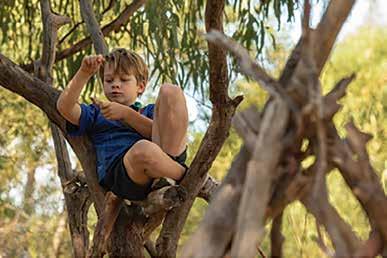
As author and kindergarten teacher Vivian Paley once described, young children have a curriculum of their very own creation, a ‘hidden curriculum’ that exists beneath the layer of timetables and organisational structures that adults use to regulate home and educational settings. Paley observed how from the moment the children see each other at the start of the day they are busy forming connections; “…the delicate web being constructed by the children in their constant exchange of ideas.”(p20, Paley, 2005). Reflecting on this idea, we can often witness this ‘hidden curriculum’ when observing children’s play.
Play is a context for learning that is meaningful for children because it is of their own creation. Russian psychologist Lev Vygotsky observed that in play children are intrinsically motivated to find ways to collaborate and problem solve; they extend themselves.
“In play a child is always above his average age, above his daily behaviour; in play it is as though he were a head taller than himself. As in the focus of a magnifying glass, play contains all developmental tendencies in a condensed form; in play it is as though the child were trying to jump above the level of his normal behaviour.”
If research has proven that play is such a positive, natural context for children’s learning and wellbeing why then is a play pedagogy not more widely supported or evidenced in Australian educational settings?
Perhaps this is because play pedagogy can challenge adults and the learning environments they have created for children. Play pedagogy requires flexibility in minds and spaces. It requires permission for spontaneity and autonomy. It challenges the way adults perceive children and the image they have of themselves.
For as joyful, creative and connected as play can be, it can also appear too loud, too messy, too risky. Play can be political and the ideas that surface can be morally confronting. Achieving the kind of play where deep learning and collaboration happens can take practice. Play may not work out for the children immediately


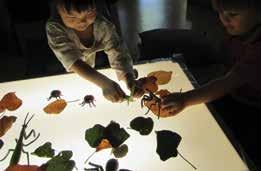
and this can be disappointing. The children benefit from having time to practise in order to develop a relationship with each. Do our busy lives allow for this?
Loris Malaguzzi presented a seminar in Reggio Emilia in 1993 where he encouraged adults to be playful themselves in their work and lives with the children:
“Each one of us needs to be able to play with the things that are coming out of the world of children. Each one of us needs to have curiosity, and we need to be able to try something new based on the ideas that we collect from the children as they go along. Life has to be somewhat agitated and upset, a bit restless, somewhat unknown. As life flows with the thoughts of the children, we need to be open, we need to change our ideas; we need to be comfortable with the restless nature of life.”
Teachers or parents who engage with a play pedagogy need to trust themselves to trust the children and the play process.
Children’s play does not fit neatly into timetables and rosters and it can be smothered by environments that are overstructured and prescriptive. For this reason a community needs to build together their approach
to play pedagogy. Teachers or parents may find they need to gather support amongst other adults, and sometimes amongst the children themselves, in order for play pedagogy to thrive. The Reggio educators propose documentation as a tool of communication and conversation in their schools; documentation to celebrate and explain the children’s perspectives.
As a teacher or parent working with a play pedagogy you’ll discover how to work from a creative, inventive space within yourself. You will realise that each child or group of children requires a different response; that no one plan or template will suffice. Your approach will require you to talk less and listen more, to document the moments and be guided by reflection. The children may seek to explore directions that you are not well versed in or prepared for. You will find yourself researching and chasing the children’s thinking as much as you might be the leader or initiator. And sometimes you might make mistakes.
Is there allowance in our adult lives to make mistakes?
Kiah Hamersley-Rule Early Childhood Teacher
04.
illustration feather: Mae K illustration houses: Yasmeen E
05.
WHY PLAY?
Sarah Polson-Brown has been an educator at Bold Park Community School since 2012 and currently works as a Teacher in one of our Year 1/2 classes and as our Lead Educator for our Saturday Playgroup. This reflection was written in communication to parents and we felt it captured something important about our approach to play.

Play provides opportunities for children to learn through their experiences as they explore, create and imagine. In settings such as our Wilderness Playgroup and Bold Park’s early years programs, children are immersed in social groups where they can communicate their ideas, challenge each other’s thinking and build new understandings of the world around them.
While Australia is mandated to The Early Years Learning Framework to ensure the delivery of quality play-based learning, research indicates that childinitiated and self-directed play has become almost non-existent in many early learning settings across the country. A greater focus on standardised testing and curriculum demands has seen the demise of play in the classrooms of even our youngest students.

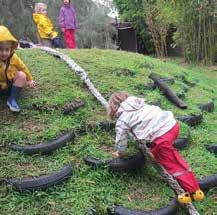
The Bold Park Community School Wildspaces provide a supportive environment where children can ask questions, investigate, hypothesise, test and engage in critical and creative thinking. Through play, they are given opportunities to develop positive dispositions towards learning which is fundamental as they begin their educational journey.
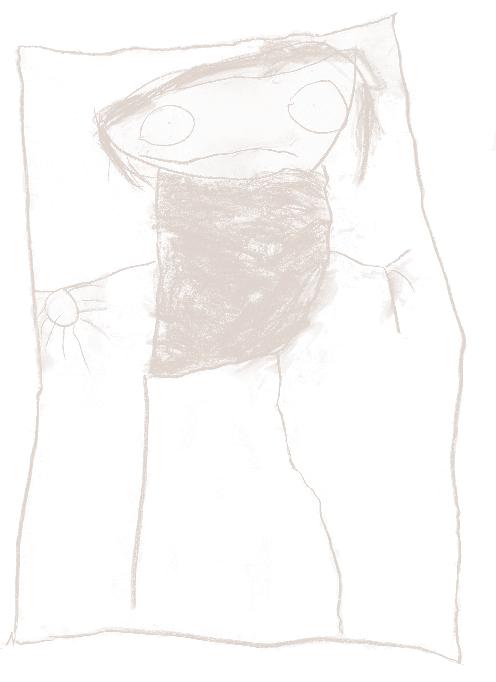
Our role as parents and educators is also paramount as we employ a range of strategies to help support learning through play. We are able to recognise spontaneous teachable moments that occur through modelling, questioning, listening and conversing. We can offer support to help our children recognise when play is unfair and scaffold a resolution to ensure the learning environment is fair and inclusive.
Sarah Polson-Brown Early Childhood Teacher
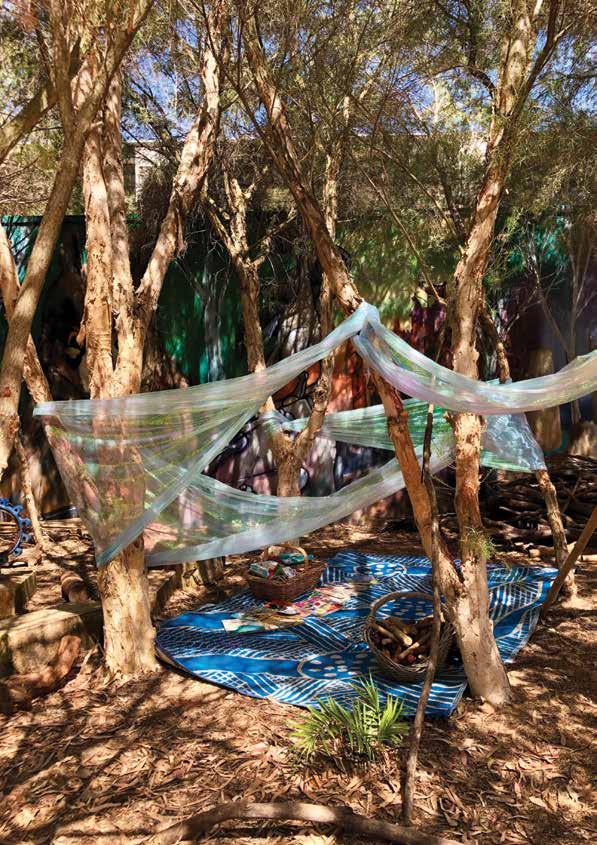
Perhaps we need to shift our thinking from differentiating between learning and playing and instead start to recognise the vital connection between the two.
illustration: Eva L 06.
THE DOOR OF PERCEPTION
Our Visual Arts Specialist, Renata Biancardi, not only works to bring the knowledge, skills and content of the visual arts curriculum to life, she also works alongside classroom teachers in an ‘embedded’ role, bringing a visual arts lens to other projects and curriculum areas. In 2019, Renata attended the Reggio Emilia Conference held in Perth. We loved Renata’s reflection on this event and we are delighted to share this with you. We think it says a lot about the ‘heart and passion’ of our educators. Renata was due to join an international study tour to Reggio Emilia, Italy in 2020 but as travel is not possible at this time, it will present as a future opportunity to look forward to.
Listening to Paola and Cinzia was much more than getting a “lecture” on how to run a Reggio Inspired environment. It was a re-encounter to my roots, and somehow it felt like going back home. A home that we call “nido”(nest), a place where you feel safe to be who you are, and everything around you makes sense. Not only because I grew up listening to my grandparents and dad speaking and singing Italian around the house but also because of the metaphorical way that they think and talk about art and education. I could see and hear from some people during the conference how they struggled to understand the way that Reggio “people” speak because everything is poetic and metaphorical. I think it shows how language affects how we understand the world. It made me think about something that I read some time ago where Paul Ricoeur, in The Rule of Metaphor, says about his own research: “... language can extend itself to its very limits, forever discovering new resonances within itself” and it makes me reflect on how important it is to recognise the power of language in constructing the world we perceive. I love the way Ricoeur talks about the processes by which “linguistic imagination creates and recreates meaning through metaphor.”
“There are things known and there are things unknown, and in between are the doors of perception”
What a beautiful way to describe it, “the doors of perception”, so what is perception?
By the dictionary, one of the descriptions of perception is: “the ability to see, hear, or become aware of something through the senses.” I’ll stay with this one for now because we are talking about the “today” children living in a society in change…during
the chaos, but yet still being unique with an identity and wanting/needing to rise out of anonymity. We can facilitate it by transforming our ideas of learning and perception. One of the many ways we can do it is by making children’s thoughts visible, and I believe it is a balance between an intuitive and rational way to approach. As we all know, children /people in general, learn better from real life, hands-on experiences and especially from each other (socio-constructivism). We are continually being created and transformed by our relationship with others. This capacity of seeing the world through the eye of a child is an extraordinary journey because they can perceive the world through their senses. We all have been there at some stage, so when we allow it, we are also reconnecting with ourselves. It can bring back to us the questions with or without answers that we have, sometimes making us feel vulnerable, but vulnerability can be a gift because it is when creativity has a space to grow. In this relationship, we can find and immerse ourselves in complexity too, by visiting what is not palpable and accepting that each one of us has our reality and our responses to reality. In a school environment, we have the responsibility to honour it and turn it into a type of “communication” by making it visible.
For young children, the reality is a “synaesthetic” process. The idea of beauty that comes from children goes beyond the aesthetic, and it is linked with resilience, respect, empathy. We need to ask children what do they think and if we don’t listen, how can we give them what they need? It shows that if we don’t understand children, we will never be able to “teach” them and the fact that teaching should never be a lonely journey.
To make it possible, we need also educate ourselves to be open for the possibilities, and it is almost like sharing an invisible way of communication. Through authentic dialogue, we see the power of words, because words are the threads where we tie our experiences, and that is why documentation is a fundamental process in this learning journey. It is

one crucial way where an idea can be revisited and extended to promote an increase in knowledge during the process/project/research (so many ways to call it!).
So what type of research can make the image of the child visible?
“The connection is the curriculum.”
NICOLLETE SOWDER
I found this quote appropriate because being in a school environment, it is always hard to deal with the “pressure” of the curriculum. Research is like a lifecycle, and everything is somehow related, just like the curriculum. For example, when we research living objects, we give children the possibility to understand how they are related to the world. It is a fundamental resource for learning because it can bring different points of view: relating to the world and also how we relate to each other.
During the conference, a lot of reflection was on the importance of creating a context (environment) full of possibilities that facilitates interaction, allowing children to be visionaries, an open “space” with investigation from real-life experiences and individual enquiry which naturally generates collaboration. Simple things that we can propose every day and every new day it would look/feel differently, just depending on how we present it. It could be by simply moving things around, changing the direction of light, introducing different tools, offering different perspectives and angles. There is a beautiful quote from a Persian poet and philosopher called Rumi: “Wherever you stand, be the soul of that place”. I feel that relates a lot to the classroom/atelier/studio “space” because it can be beautifully set up but if it doesn’t have a “soul” in it… what is the point? A “soul” can be the core of a project, and it can be seen during the experiences in Reggio when there is a project happening, you can see and feel it with all the senses.
(I haven’t been there so I am going with the impression that I have from my experiences during conferences and readings about it).
As Loris Malaguzzi would say:
Teaching is a profession that can not afford to think small.
To finalise, we already know the children’s imaginary world is a very fertile land ready to grow. We also know that there is time for interpretation and time for listening where individual thoughts can be shared and sustained by the ideas of others. But, are we inviting them to go beyond to the visible possibilities from daily experiences? Are we allowing the dance between theory and practice in an authentic way? I hope we all understand how it is essential to always stay with the idea of the children because it gives us more flexibility to move around their interests. We can use the “gift of time” for the real connections, and it can be a powerful healing process for this crazy “starvedfor-time”, rushed way of living that our society seems to promote, especially for our children. It is the time to be brave and keep on challenging it, and I genuinely believe we all can do it together.
“If you want to go fast, go alone. If you want to go far, go together.”
AFRICAN PROVERB
Renata
Biancardi Visual Arts Specialist
ALDOUS HUXLEY artwork: collaboration between pre-kindy class Muddy Buddies and kindy class Dancing Diggers 08.
09.
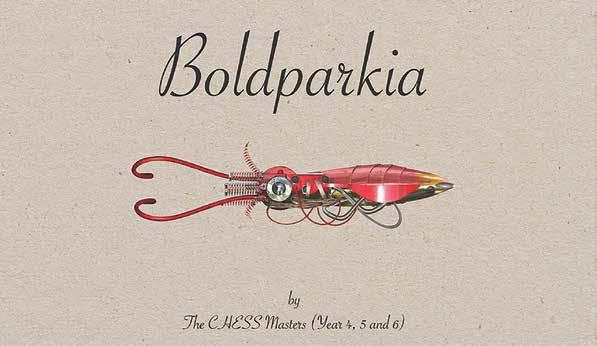
BOLDPARKIA
Playing with dystopian mentor texts in partnership with the Arts to construct new, imaginative possibilities.
As Year 4, 5 & 6 Educators Rhys, Ren and Sam discover; literature is a powerful vehicle of play in provoking new arenas of inquiry with older students. “Boldparkia” is the materialisation of an approach to literacy instruction that utilised mentor texts as inspiration for a group of young authors and illustrators. Australian author Deborah Abela’s books ‘Grimsdon’ and ‘New City’ challenged students to think about dystopian futures as they explored creative writing techniques.
Simultaneously, Lance Balchin’s books Mechanica: A Beginners Field Guide and Aquatica: A Beginners Field Guide, were utilised to provide further perspective on this theme, through captivating visual imagery of imagined future species!
The exploration of these mentor texts and their diversity of creative techniques facilitated Year 4, 5 and 6 student’s thinking, about the future possibilities of their world. Collaboratively, the students then created their own dystopian future and through careful consideration designed Boldparkia creatures with unique adaptations to survive in this new world.
Through this process their creative literature becomes reinforced by their works of art, including constructed 2D and 3D models, illustrations and use of digital photo manipulation software. Through Boldparkia we see how harnessing the power of literature as an art form can take the propositions of powerful texts beyond the language learning content areas and use them as motivation in achieving the outcomes of Science, Mathematics, History and Geography.
We see a solid representation of project-based learning not only where multiple subject areas intermingle but importantly, where the children are engaged in the full process, right through to publishing their jointly constructed text appropriately named; Boldparkia
Rhys George – Arts Team Leader / Media Specialist
Renee Yonge – Primary School Teacher
Sam Jefferies – Co-Educator

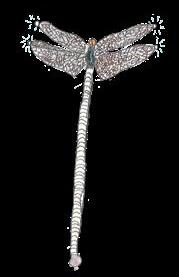
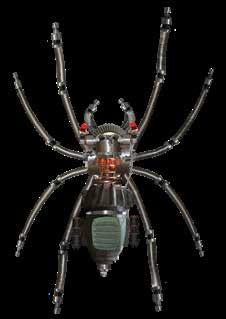





10. 11.
Drag Leech : Ben
Brown Jellyfish: Kaelan
Speeding Fly Dragon: Ruby
Pincer Spider: Cody
SAMPLE INITIATIVES AND ACTIONS

STRATEGIC PRIORITY 1.
CHILD AT THE CENTRE
GOAL 1 / WE SUPPORT THE DEVELOPMENT OF WHOLE BEINGS
• Implementation of the Whole School Mental Health Framework
• Student Version of Mutual Respect Policy / Behaviour Guides
• Student Code of Conduct
• Curriculum, Assessment + Programs: reflect development of 'whole child' including physical, mental and social wellbeing
GOAL 2 / OUR STUDENTS ARE ENGAGED AND INFLUENCE THEIR LEARNING
• Seek opportunities for unique partnerships that enhance student agency, recognise existing and emerging passions
• A pathways team in our senior years
• New technological infrastructures
• Implement new reporting software
GOAL 3 / OUR STUDENTS ARE AMBASSADORS
• Develop ‘at school’ leadership opportunities (e.g. leading tours, events, responsibilities)
• Encourage external leadership opportunities and partnerships
• Student lead workshops and presentations e.g. permaculture, United Nation projects , Certificate IV Design Projects
• Visible alumni stories and successes
STRATEGIC PRIORITY 2. PHILOSOPHY IN PRACTICE
GOAL 1 / WE DEVELOP REFLECTIVE LEARNERS
• Making visible our Bold Park Learner Attributes through reflection, personal goals and self assessment
• Targeted professional learning on reflective processes and strategies informed by world’s best practice
GOAL 2 / WE VALUE LEARNING THROUGH HEAD, HEART AND HANDS
• Researching ‘new metrics’ that demonstrate student progress in qualities that are currently not considered measurable
• Make visible the deep learning that occurs through projects, play, the arts and place (e.g. conferences, exhibitions, partnerships, documentation)
GOAL 3 / WE PROVIDE OPPORTUNITIES TO CONNECT
• Sta -lead conferences and workshops
• Parent workshop opportunities
• Expand media presence and targeted publications
STRATEGIC PRIORITY 3. A CONNECTED, CARING COMMUNITY
GOAL 1 / WE ACTIVELY ENGAGE WITH SUSTAINABLE INITIATIVES IN OUR NATURAL WORLD
• Sustainability Action Plan Initiatives – e.g. permaculture garden developments, native plants, recycle centre, composting site
• Moving toward paperless systems
• Beyond our Gates – Maintain existing, and develop new relationships with aligned local community groups / caring for local areas
GOAL 2 / WE EMBRACE THE VALUE OF DIFFERENCE
• Reconciliation Action Plan –Future focus and new initiatives in indigenous engagement and partnerships
• Develop an Inclusive Culture Policy that captures the compassionate, empathic heart of our community
• Child-friendly version of Mutual Respect Policy
GOAL 3 / WE TREASURE OUR HERITAGE AS A FOUNDATION FOR FUTURE GROWTH
• Cultivate our relationship and connections with our alumni
• Treasuring Bold Park’s heritage and history (e.g. archiving strategies, heritage focus)
• Enhance our relationships with our founder, elders, patron and alumni
STRATEGIC PRIORITY 4. FINANCIAL STRENGTH
GOAL 1 / WE PROMOTE THE VALUE OF INVESTMENT IN A BPCS EDUCATION
• Marketing strategy, refresh website, visibility of senior’s programs and opportunities
• Broadening opportunities for new families to engage with Bold Park
GOAL 2 / WE EXPLORE, PURSUE AND RESPOND TO OPPORTUNITIES AND CHALLENGES
• Open Maylands campus 2021
• Explore new opportunities (e.g. Pedagogical Centre, Innovation Hub)
• Complete Early Childhood playground
GOAL 3 / OUR FINANCIAL MANAGEMENT IS DYNAMIC
• Maintain a financially viable and sustainable organisation
• Pursuing a wide range of fundraising and grant strategies
• Explore new opportunities (e.g. community initiatives / events)
STRATEGIC PLAN 2020/2023
PURPOSE
We reimagine what a school can be, by cultivating a community of learners who positively influence their worlds.
VISION
This strategic plan will make visible the value of a BPCS education that evolves self-confident, self-aware and socially responsible citizens.
BOLDPARK.COM –PULL ME OUT & KEEP ME! –
1 .
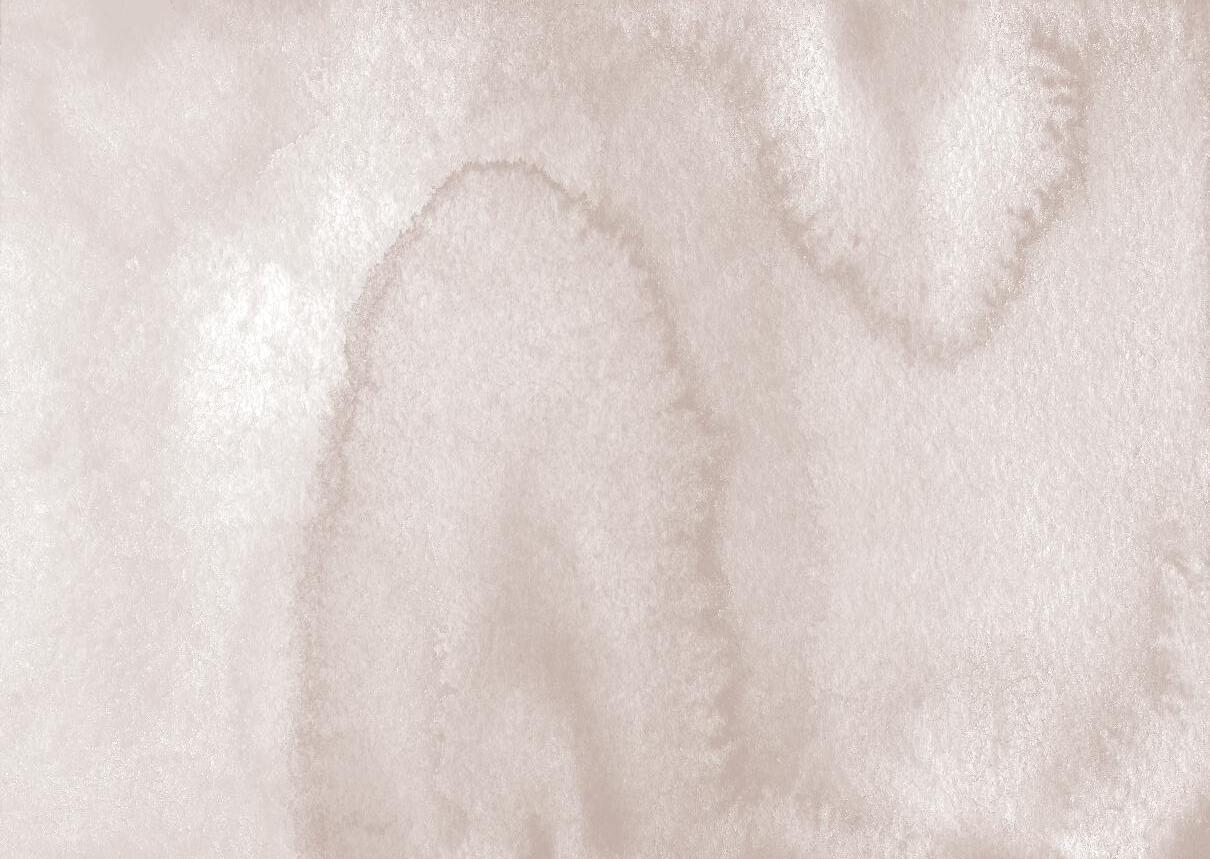
S T R A TE GIC PRIORI T Y O N E
C H ILD A T TH E C E N T R E Emp o weri n g c h ild r en as sel fr egul a ted ind i v id uals w i th i n flu e n ce t h r o u gh g r o wi n g o ur cu l tu r e o f collab o r a t i o n a nd m u tual respect.
GOAL 3 / OUR STUDENTS ARE AMBASSADORS We view our students as capable individuals and believe their voice is our strongest asset by providing opportunities for the students to be active ambassadors in what they say and do in the wider community.
GOAL 2 / OUR STUDENTS ARE ENGAGED AND INFLUENCE THEIR LEARNING We empower and create an environment where students have agency to collaborate, contribute ideas, follow their passions and make a di erence in their learning.
GOAL 1 / WE SUPPORT THE DEVELOPMENT OF WHOLE BEINGS We support the development of the whole child, prioritising their well-being within a culture of mutual respect.
2 . S T R A TE GIC PRIORI T Y TWO PHILOSOPHY IN PRACTICE Advancing our dynamic educational practices, identity and reach.
GOAL 3 / WE PROVIDE OPPORTUNITIES TO CONNECT Reaching out and connecting with opportunities for sta , parents and the wider community to engage with our practices and philosophy.
GOAL 1 / WE DEVELOP REFLECTIVE LEARNERS Our students and sta reflect on their learning in order to a rm their strengths and grow their capabilities. GOAL 2 / WE VALUE LEARNING THROUGH HEAD, HEART AND HANDS Making visible our approach and investigating ‘new measures’ to demonstrate learning progress in qualities that are valued such as collaboration, creativity and learning dispositions.
3
A CONNECTED, CARING COMMUNITY We show through our culture and actions how we care for people and our earth.
1 / WE ACTIVELY ENGAGE WITH SUSTAINABLE INITIATIVES
S T R A TE GIC PRIORI T Y THREE
IN OUR NATURAL WORLD
we live in an interconnected world where our actions
impact. GOAL 2 / WE EMBRACE THE VALUE OF DIFFERENCE
all to value diversity
compassion
empathy. GOAL
/ WE
4 . S T R A TE GIC PRIORI T Y FOUR FINANCIAL
resources to improve the outcomes of our community GOAL 1 / WE PROMOTE THE VALUE OF INVESTMENT IN A BPCS EDUCATION
attract
. GOAL 2 / WE EXPLORE, PURSUE
TO
BOLD PARK COMMUNITY SCHOOL STRATEGIC PLAN 2020/2023
.
GOAL
Recognising
have
Enabling
through
and
3
TREASURE OUR HERITAGE AS A FOUNDATION FOR FUTURE GROWTH Using our strong foundation in order to reach.
STRENGTH Using our
Providing clarity of our o erings to
and retain students and exceptional sta
AND RESPOND
OPPORTUNITIES AND CHALLENGES Maintaining innovation and excellence in our education. GOAL 3 / OUR FINANCIAL MANAGEMENT IS DYNAMIC We are proactive in improving outcomes for our community.
SAMPLE INITIATIVES AND ACTIONS
STRATEGIC PRIORITY 1.
CHILD AT THE CENTRE
GOAL 1 / WE SUPPORT THE DEVELOPMENT OF WHOLE BEINGS
• Implementation of the Whole School Mental Health Framework
• Student Version of Mutual Respect Policy / Behaviour Guides
• Student Code of Conduct
• Curriculum, Assessment + Programs: reflect development of 'whole child' including physical, mental and social wellbeing
GOAL 2 / OUR STUDENTS ARE ENGAGED AND INFLUENCE THEIR LEARNING
• Seek opportunities for unique partnerships that enhance student agency, recognise existing and emerging passions
• A pathways team in our senior years
• New technological infrastructures
• Implement new reporting software
GOAL 3 / OUR STUDENTS ARE AMBASSADORS
• Develop ‘at school’ leadership opportunities (e.g. leading tours, events, responsibilities)
• Encourage external leadership opportunities and partnerships
• Student lead workshops and presentations e.g. permaculture, United Nation projects , Certificate IV Design Projects
• Visible alumni stories and successes
STRATEGIC PRIORITY 2.
PHILOSOPHY IN PRACTICE
GOAL 1 / WE DEVELOP REFLECTIVE LEARNERS
• Making visible our Bold Park Learner Attributes through reflection, personal goals and self assessment
• Targeted professional learning on reflective processes and strategies informed by world’s best practice
GOAL 2 / WE VALUE LEARNING THROUGH HEAD, HEART AND HANDS
• Researching ‘new metrics’ that demonstrate student progress in qualities that are currently not considered measurable
• Make visible the deep learning that occurs through projects, play, the arts and place (e.g. conferences, exhibitions, partnerships, documentation)
GOAL 3 / WE PROVIDE OPPORTUNITIES TO CONNECT
• Sta -lead conferences and workshops
• Parent workshop opportunities
• Expand media presence and targeted publications
STRATEGIC PRIORITY 3. A CONNECTED, CARING COMMUNITY
GOAL 1 / WE ACTIVELY ENGAGE WITH SUSTAINABLE INITIATIVES IN OUR NATURAL WORLD
• Sustainability Action Plan Initiatives – e.g. permaculture garden developments, native plants, recycle centre, composting site
• Moving toward paperless systems
• Beyond our Gates – Maintain existing, and develop new relationships with aligned local community groups / caring for local areas
GOAL 2 / WE EMBRACE THE VALUE OF DIFFERENCE
• Reconciliation Action Plan –Future focus and new initiatives in indigenous engagement and partnerships
• Develop an Inclusive Culture Policy that captures the compassionate, empathic heart of our community
• Child-friendly version of Mutual Respect Policy
GOAL 3 / WE TREASURE OUR HERITAGE AS A FOUNDATION FOR FUTURE GROWTH
• Cultivate our relationship and connections with our alumni
• Treasuring Bold Park’s heritage and history (e.g. archiving strategies, heritage focus)
• Enhance our relationships with our founder, elders, patron and alumni
STRATEGIC PRIORITY 4.
FINANCIAL STRENGTH
GOAL 1 / WE PROMOTE THE VALUE OF INVESTMENT IN A BPCS EDUCATION
• Marketing strategy, refresh website, visibility of senior’s programs and opportunities
• Broadening opportunities for new families to engage with Bold Park
GOAL 2 / WE EXPLORE, PURSUE AND RESPOND TO OPPORTUNITIES AND CHALLENGES
• Open Maylands campus 2021
• Explore new opportunities (e.g. Pedagogical Centre, Innovation Hub)
• Complete Early Childhood playground
GOAL 3 / OUR FINANCIAL MANAGEMENT IS DYNAMIC
• Maintain a financially viable and sustainable organisation
• Pursuing a wide range of fundraising and grant strategies
• Explore new opportunities (e.g. community initiatives / events)


BOLDPARK.COM
MAPPING A SENSE OF PLACE
This is our place…

Place based education is about deep immersion in the experience of the world surrounding us, engaging with what is happening and what is meaningful. It is a natural progression from play based learning as it draws on what is meaningful to students and allows for them have influence on the direction of their learning. In this particular story we not only have a wonderful example of place based education, but we also see the ‘might’ that the Arts brings to enliven a project. Rhys George worked in the role of embedded arts specialist, helping transform the groups ambitious and creative plans for a ‘virtual tour’ into a reality, through the language of digital and media arts.


“Developing a sense of place is one piece of the puzzle in remaking our schools with a focus on sustainability.”
SOBEL, 1998
In 2019 Bold Park reached its 20th year, and as part of our celebrations a community event was held. The children in the Year 1/2 were eager to take people on a tour of their favourite places around the school, “a tour is when you bring them in and show them”, “we could take them out to the spaces and talk about it”. But how would this be possible? Rather than dismissing the idea as impractical, with a large crowd expected at the event, the educators asked the children how they thought they could bring this idea to reality?
“Draw a picture of it and write what space it is”. Luka
“ A map is something that is a navigation bit, so we know where something is”. Asher
“ We could put it on a CD with a video of it with us talking about it”. Ryan
“We could put it in a phone like a map and swipe around like Google Earth…they take pictures by satellite and car taking pictures”. Ari
“We could look here on Google Earth and copy it and trying to draw it the same as it appears, looking very carefully and copying the details”. Arah



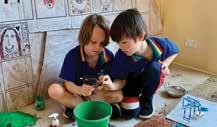
“The shared experiences cause a shift from a feeling of ‘this is my place’ to ‘this is our place’. This is one of the foundation stones of stewardship.”
SOBEL, 1998
We see the children draw from their experiences with contemporary technology such as Google Earth and the idea of a virtual tour was born! Using projection mapping, they intertwined video narrations into their model of the school to create a tour experience for the audience.
Through tours of the place, children share their perspective and insight into spaces. Through the creation of maps and models, children are required to decentre and see from another perspective. The Year One and Two School Tour project utilises both tours and mapping skills to make visible the web of perspectives through their relationship with place.
Within their video production, the children used interviews on location to share how they use the space to play. The video travels through the school campus using a technique called a hyperlapse, a method which allows the children to understand
better the properties of the moving image. Their completed production is an insight into the children’s perspective of place; it provides a snapshot of time, where they have grown from and suggests how spaces transform through their development.
The journey of making a three-dimensional map of our school has been a process filled with curiosity, joy and wonder. We have ventured to areas beyond our school to survey the grounds from different perspectives. Employing a range of digital technologies including Google Earth and a drone, we were able to explore aerial maps within focus areas including shape, size, texture, position, scale, relationships, typography and colour. While teaching cross-curricular integration through this project was valued, more importantly we were able to link our lives and learning, to our place.
Rhys George – Arts Team Leader / Media Specialist
Brooke Healy – Early Childhood Teacher
Jasmine Mawdsley – Co-Educator
18.
19.


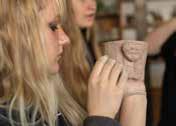





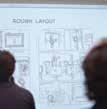
OUTTA BOUNDZ
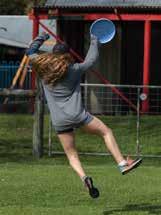

In addition to the study packages offered at Bold Park Community School, Middle School (Year 7–9) and College (Year 10–12) students have opportunity to engage in three, term-long experiences which challenge and engage them.
The ‘Outta Boundz’ experiences allow students to immerse themselves in a wide range of skills and encounters to broaden their life experience. In College (Year 10–12), these experiences may be integrated into and enhance the student’s WACE courses and provide real, hands-on and engaging content to apply to course work.
Over the years, staff have listened and responded to the variety of ideas proposed by students in shaping these term-long opportunities and have included: Yoga, Snorkelling, Kayaking, Cycling, Archery, Horse Care (with Riding for the Disabled), Philosophy, Study Skills, Woodwork (working alongside ‘The Men’s Shed’), City Tours, Fencing, Climbing, Hiking, Orienteering, Beach Volleyball, Cooking (with a Chef), Fitness, Parkour, Ballet (with the WA Ballet Company) and Capoeira!


21.
Urban

In 2018 our Year 7–9 and Year 10–12 students stepped out (and rode their bicycles) in many of Perth’s diverse outdoor public spaces over ten weeks. Students worked in partnership with Curtin University to consider the value of these spaces and their impact on our physical and mental health. The ‘Outta Boundz’ program is overseen by Bold Park’s Team Leader for Middle School/College Tim Vidler, who reflects on the value of these experiences for our young adults.
One of the pillars of Bold Park Community School’s philosophy is nature based education. As a school, we celebrate the myriad benefits for all students of engaging in the outdoors. Too often however, particularly in senior years, “Outdoor Education” is considered the domain of the hard-core adventurer where physically and mentally demanding activities such as mountain biking, rafting or overnight hikes dominate. While we do celebrate these challenging activities, we also value the everyday possibilities for wellness that exist all around us. Walking the dog, joining a local community group, or a moment of contemplation under a big tree. For it is these types of everyday outdoor experiences that are readily accessible to all, that can be built into a lifelong /daily approach towards health and wellbeing.
The aim of our park visits was to support young people to be aware, confident and empowered to explore and engage in the diverse outdoor possibilities available in their local area.

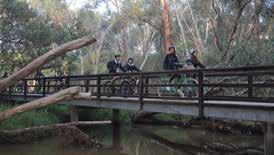
We encouraged our young people to connect with their local outdoor spaces in different ways, such as:
• Exploring the natural and built environments, including flora and fauna
• Engaging with and learning from different cultures and sub-cultures
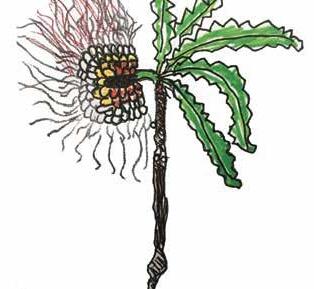
• Finding opportunities for physical play and challenge
• Learning about indigenous and settler history, and significant places
• Joining the vibrant community organisations that use and manage them
• Contemplating memorials
Through this project we focussed on the breadth of benefits to be gained from outdoor community spaces to promote all the dimensions of health: physical, social, emotional, mental and spiritual.
Through our weekly visits we explored and engaged in a range of outdoor spaces around Perth. The students were encouraged to collect photos, videos, sound recordings and notes of what “grabbed them” on their visits. The focus is on images that reflect their connection to the place. For example, what was it about this place that inspired, challenged or benefited them, and that generated positive feelings or thought processes, or that they just enjoyed? The students were encouraged to look for connections or “big ideas” that linked these reflections and images together, and created digital stories using iMovie to showcase their experience.
Tim Vidler
Middle School &
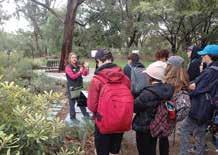
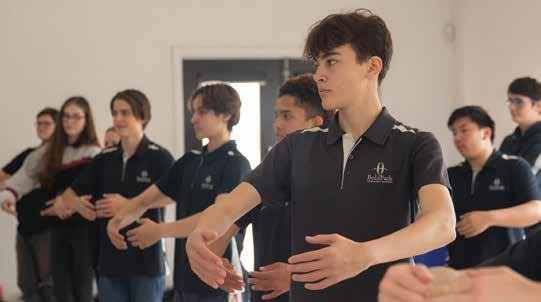
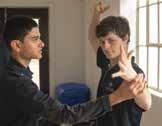

Connecting With Place — building intentional connections to place (Maylands)
I recall joining Bold Park Community School in 2010 having spent many years in traditional secondary environments. In the opening weeks, Tim Vidler (now Team Leader for Middle School and College) had organised a combined Yoga session with one of our school parents; in total, 35 children aged 12–18 and three adults. I recall that I expected I would be ‘supervising’ the session and managing any issues of student disengagement — I didn’t expect in those early days of my Bold Park time, that students could fully commit to an hour long Yoga session with full focus and an attitude of giving everything a go.
How wrong I was.
This was my first of many ‘Ah-Ha’ moments at Bold Park, as students fully engaged in each part of the experience, listening, following, trying, failing and enjoying success. Building between sessions with confidence and skill. I recall documenting the sessions at first and then feeling enough confidence in the culture of the space and the student team to fully engage in the session as a co-participant.

The ‘Outta Boundz’ experiences are hard to explain unless you have been with the students and experienced it yourself. This powerful culture has been nurtured by an amazing educational team and is headed by Tim Vidler.
As the curator of the program, Tim considers the interests of the students but also what will challenge and inspire them. Following the 2018 announcement of a new campus in Maylands, Tim sought out opportunities and partnerships for our students that would build a connection with the local community in Maylands and intrinsically provide our young adults with a familiarity with people and places in Maylands. This has included term-long programs at ‘The Rise’ (Recreation and Sports Centre) engaged in Netball (2018); a term’s focus at ‘Clayworks’ (2020) working with design and visual artists on individual composition projects and in 2019 a partnership with the choreographical and dance team at the West Australian Ballet Centre (who were preparing for their performance of ‘Giselle’ a classical ballet piece). All three experiences based within a 1km radius of our new senior campus (Years 10–12) in Maylands.
Tim reflects on the ballet program: “The students are exploring classical ballet moves and forms to create a choreographed piece that reflects their feelings of ‘home, community and welcome’! Being part of the West Australian Ballet has allowed us to work with professionals in the field. We have enjoyed developing our senior students’ ideas and challenging them in a field that they might usually find confronting or unusual (ballet). Taking a central idea that we have studied in class, for example immigration or refugees, can be very heavy. The notion of processing it in a positive way and expressing our thoughts and feelings with our bodies brings a different perspective and sense of joy in reflecting our ideas about home and being welcome and engaging with our community.”
Paul Whitehead Principal
22. 23.
action
Outdoors — an example of our ‘Outta Boundz’ in
College Team Leader Health Teacher
illustration: Isabella C
24.
MAYLANDS EMERGING
2021 will mark a milestone for Bold Park Community School, with our Maylands ‘College’ Campus set to open! Extensive renovation work has been in place throughout the year and we are pleased to be nearing completion — ready to add our finishing touches on a premium space which will offer a stunning environment for learning.
The Maylands Campus is now finally at NEUTRAL! The ‘building’ is now a blank canvas to bring all our BOLD to and reflect the energy, awe and excitement that people FIRST feel and experience when they walk into our school here in Wembley.
PAUL WHITEHEAD

We will continue to offer a unique learning journey for our young adults (Years 10–12) in a culture which promotes mutual respect, collaboration, reflection, creativity, imagination, problem-solving and participation in the life of the whole school and wider community.
We remain one of only a few schools that offer a Certificate IV in Years 11 and 12 as part of our pathway trajectory, allowing a direct entry to university via portfolio as a real alternative for senior students. The course is design-centric, encompassing media and visual arts, entrepreneurial skills and is future skills focused. Students also engage with a wide range of WACE courses, Endorsed Programs and vocational alternatives as part of the senior learning package.
The new Maylands ‘College’ Campus offers young adults a springboard from their Middle School foundations. Our students will engage independently within the school environment and interact in the wider community spaces within Maylands.
Students of this age are trusted to enjoy a context in which freedom of movement and space to explore, engage and interact with the world around them is welcomed and supported.
The Bold Park Community School model continues to offer two educators in every class context as well as a specialist team of educators that add to the exceptional quality of cross-curricular, project-based learning operating daily across the campus.
Paul Whitehead Principal


25.

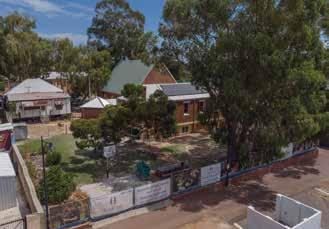
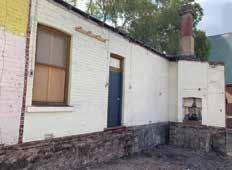
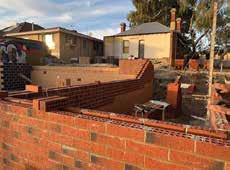
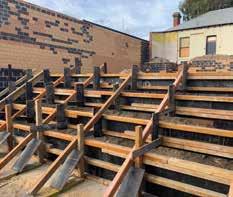


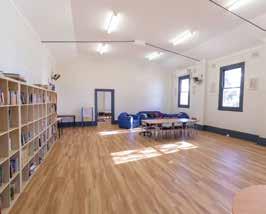
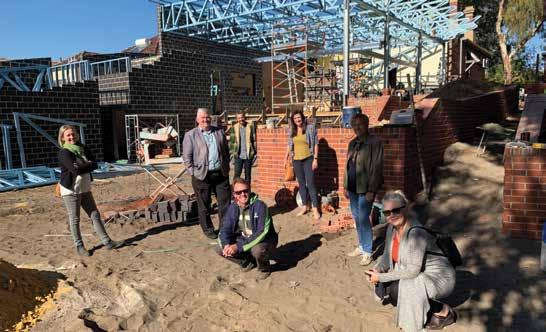



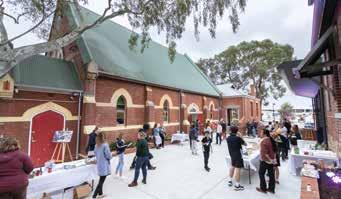
FINAL WORDS

Our inaugural publication commenced as an idea on a page at the start of 2019 and we first met with Angela Mitchell (Graphic Designer) in January 2020 to see what might be possible. It has been a joy to work on this publication and to present to you a first, finished version of ‘Bolder’.
Our first print run incorporates all currently enrolled families, Bold Park partners and friends, will be included in our Enrolment Inquiry Packs and be peppered in locations around Wembley and Maylands (and available during live events and tours).
Now it is in your hands and we welcome your feedback!
We would love to know what you loved, what you have learnt about the school, what you think we should add or withdraw? We are also keen to know if you will use the publication as a vehicle to talk about the school with others (for existing families) or consider the school for your own children. Indeed, if Bold Park is a new consideration for you, we encourage you to come on a tour with us if you have more questions.
For this edition, a fervent consideration of the role and importance of ‘play’ made an inspiring first focus and deciding on what to include from so many wonderful stories was a most difficult task, we noted that the publication pages grew across the year to take on board more possibilities.
Our next edition will likely face a similar challenge as we look together at the indigenous heritage and connection through time here at Galup (Lake Monger) and how we celebrate, respect and learn from our indigenous elders, the stories from the past and our shared future.
Thank you for reading, reflecting, learning and connecting with us.
Boordawon, is the Noongar language word for ‘See you soon’ and so we thought we would sign off with that!
Paul Whitehead and Nicole Hunter Co-Editors – ‘Bolder’
Bold Park Community School
REFERENCES
PG 03 / PEDAGOGY OF PLAY
Bjorklund, D. (2007). Why youth is not wasted on the young: Immaturity in human development. Oxford: Blakewell Publishing.
Sahlberg, P. & Doyle, W. (2019). Let the children play: How more play will save our schools and help children thrive New York: Oxford University Press.
Zosh, J. M., Hopkins, E. J., Jensen, H., Liu, C., Neale, D., HirshPasek, K., Solis, S. L., & Whitebread, D. (2017). Learning through play: A review of the evidence (white paper) Retrieved from https://www.legofoundation.com/media/1063/learningthrough-play_web. pdf
PG 04 / PLAY: ARE YOU BOLD ENOUGH?
International Play Association(n.d.) Child’s right to play https://ipaworld.org/childs-right-to-play/the-childs-right-toplay/
Malaguzzi, L. (1994). Your image of the child: Where teaching begins Retrieved from https://www.reggioalliance.org/ downloads/malaguzzi:ccie:1994.pdf
Paley, V.G., (2005), A child’s work: The importance of fantasy play. Chicago, USA: University of Chicago Press Vygotsky, L. S. cited in Bodrova, E. & Leong, D., (Spring 2015). Vygotskian and post-Vygotskian views on children’s play. American Journal of Play 7, 3, pp: 371-375. Retrieved from: https://files.eric.ed.gov/fulltext/EJ1070266.pdf
PG 08 / THE DOOR OF PERCEPTION
Huxley, A. (1954). The doors of perception. New York: Harper & Brother
Sowder, N. (n.d). Wilder child: Nature-connected parenting https://wilderchild.com/?fbclid=IwAR0bCFuog3on6uuI5_ jfrm1hqxBjQmQgXJqOpUDYql2qPqQB4mthvkrPXpk
PG 10 / BOLDPARKIA
Abela, D. (2014). Grimsdon North Sydney, NSW: Random House Australia
Abela, D. (2014). New city. North Sydney, NSW: Random House Australia
Balchin L. (2017). Aquatica: A beginner’s field guide Richmond, Victoria: Five Mile Press
Balchin, L. (2016). Mechanica: A beginner’s field guide Scoresby, Victoria: Five Mile Press
PG 16 / MAPPING A SENSE OF PLACE
Sobel, D. (1998). Map making with children: Sense of place education for the elementary years. Portsmouth, NH: Heinemann
28.
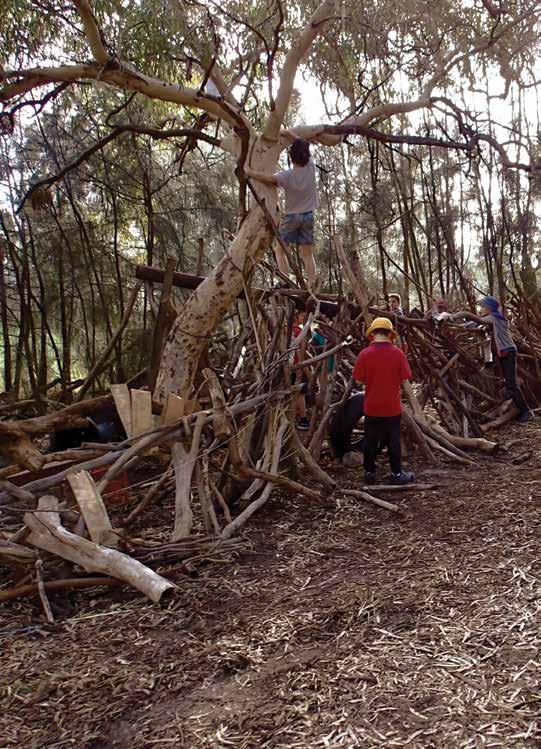
WWW.BOLDPARK.COM ISSUE /01 BE BOLD BE BRAVE BELONG















































































